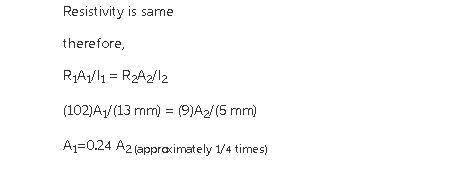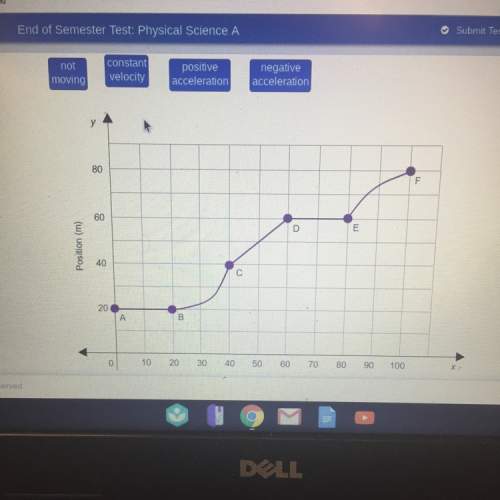
Physics, 11.06.2020 01:57 mosthatedpicky1
Some types of spiders build webs that consist of threads made of dry silk coated with a solution of a variety of compounds. This coating leaves the threads, which are used to capture prey, hygroscopic - that is, they attract water from the atmosphere. It has been hypothesized that this aqueous coating makes the threads good electrical conductors. To test the electrical properties of coated thread, researchers placed a 5-mm length of thread between two electrical contacts. The researchers stretched the thread in 1-mm increments to more than twice its original length, and then allowed it to return to its original length, again in 1-mm increments. Some of the resistance measurements are shown. If the conductivity of the thread results from the aqueous coating only, how does the cross-sectional area A of the coating compare when the thread is 13 mm long versus the starting length of 5 mm? Assume that the resistivity of the coating remains constant and the coating is uniform along the thread. If the conductivity of the thread results from the aqueous coating only, how does the cross-sectional area of the coating compare when the thread is 13 long versus the starting length of 5 ? Assume that the resistivity of the coating remains constant and the coating is uniform along the thread. A13mm is about 1/10 A5mm. A13mm is about 1/4 A5mm. === correct answer... I figured it out. R = pL/A. L is 2.5 times. Therefore, A must be 1/4 times. A13mm is about 2/5 A5mm. A13mm is the same as A5mm.

Answers: 1


Another question on Physics

Physics, 22.06.2019 09:00
What is a possible result of higher air temperature caused by global warming
Answers: 1

Physics, 22.06.2019 14:20
How many atoms of nitrogen are in the chemical formula ni(w on
Answers: 1


Physics, 22.06.2019 16:00
Rank the six combinations of electric charges on the basis of the electric force acting on q1. define forces pointing to the right as positive and forces pointing to the left as negative. rank positive forces as larger than negative forces. q1,q2,q3 = positive(+) q1 = + q2 = + q3 = - q1 = + q2= - q3= + q1= - q2= + q3= + q1= + q2= - q3= - q1,q2,q3 = negative
Answers: 1
You know the right answer?
Some types of spiders build webs that consist of threads made of dry silk coated with a solution of...
Questions


English, 02.10.2019 16:40

Mathematics, 02.10.2019 16:40

Geography, 02.10.2019 16:40

History, 02.10.2019 16:40

History, 02.10.2019 16:40


History, 02.10.2019 16:40



Business, 02.10.2019 16:40





Mathematics, 02.10.2019 16:40

History, 02.10.2019 16:40


English, 02.10.2019 16:40





